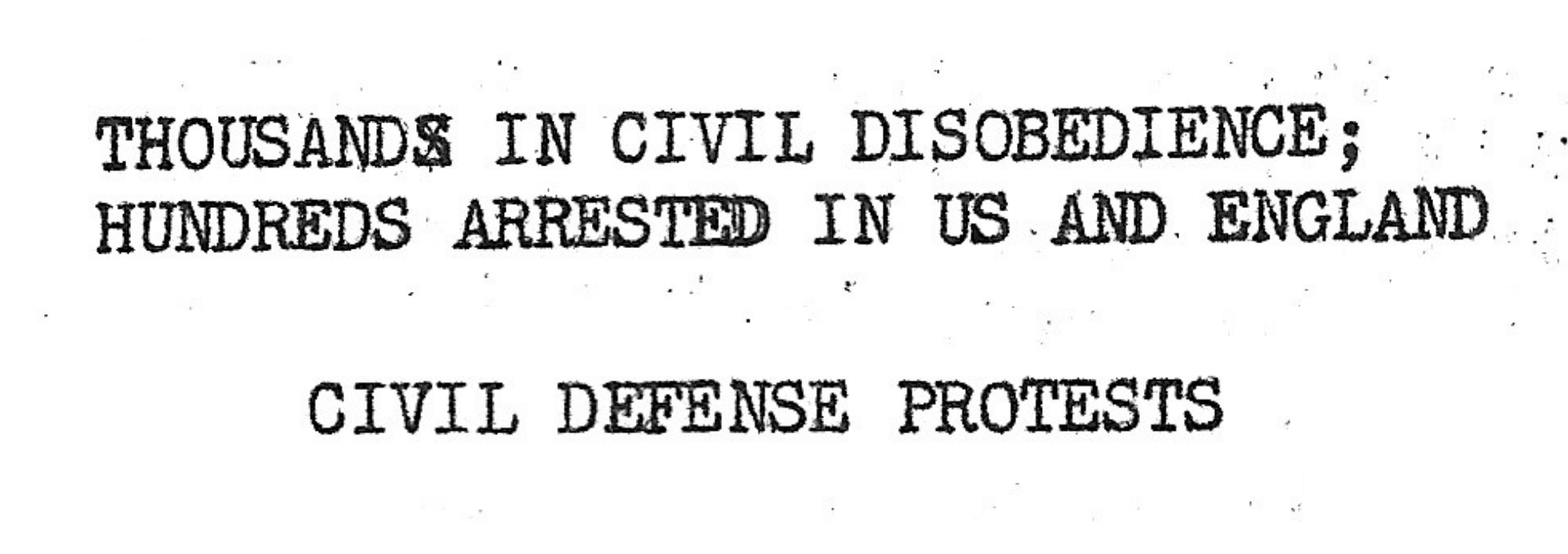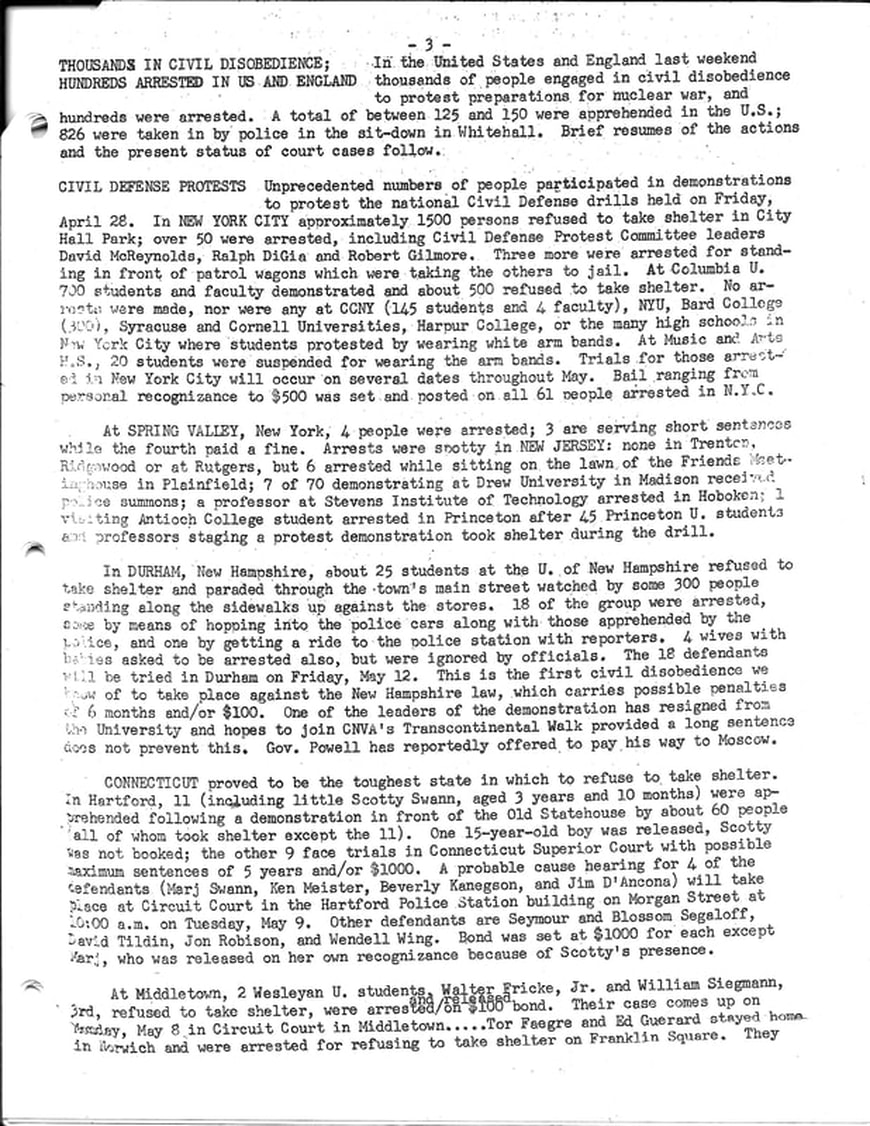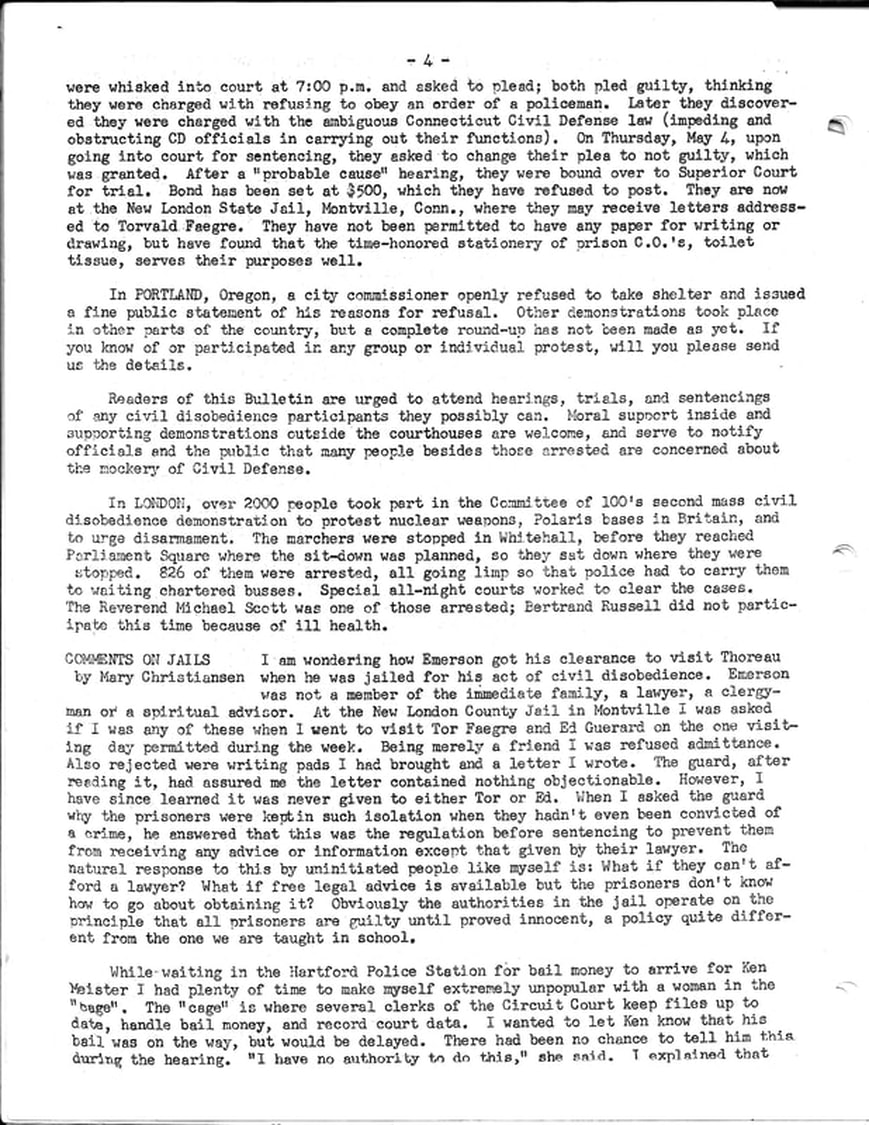|
In the early 1960s, a movement against the production and use of nuclear weapons was growing across the world. In the English-speaking world, this movement spread rapidly in the two principal countries most responsible for the invention of the first nuclear weapons: the United States and the United Kingdom. The movement involved various protest actions for consciousness-raising and educating the public, and in the US and UK, Easter time became a major period for protest demonstrations against nuclear weapons. In April 1961 in New York City, over two thousand people obstructed, refused to participate in, or otherwise protested the “civil defense drills” (i.e. “duck-and-cover” drills”). That same month, across New York State and New Jersey, many more staged demonstrations against the drills, especially students and educators at various colleges and high schools. In New Hampshire, one university professor helped to organize dozens of students and other activists in a protest march during a civil defense drill, and ultimately resigned from his position in order to join the San Francisco to Moscow Transcontinental Walk for Peace. Over in London, UK, where the Transcontinental Walk would pass within a few months, over 2000 people marched in protest over their own government’s active involvement in and production of nuclear weapons. The hundreds of protesters went limp when arrested, just as they had trained, refusing to cooperate with their own arrests and causing massive and expensive disruptions in the heart of the country. Many other less well-documented demonstrations popped up across both the United States and the United Kingdom in Spring 1961 and after, including ones put on by the Committee for Nonviolent Action (CNVA) across Connecticut — "the toughest state in which to refuse to take shelter." Some were small, with just a few dozen participants, while others swelled to hundreds or thousands of protesters at a time. And yet, all taken together, even the small demonstrations contributed to the wider movement. Demonstrations that started small often snowballed over the years into bigger affairs involving more organizations. These demonstrations were especially effective because of their timing. American and British activists still living in predominantly Christian countries specifically chose the Easter season to conduct protest activities in part in order to contrast the modern rhetoric of nuclear war with the message of the ancient “Prince of Peace,” Jesus of Nazareth. By evoking the language, imagery, and stories familiar to the general populace and applying them to contemporary issues — by meeting the people where they were — the movement continued to grow. While the dream of full disarmament, the ultimate goal of many of these activist groups, remains unfulfilled, within just a few years of the first of the antinuclear weapons protests, the United States, United Kingdom, and Soviet Union (plus the few other nuclear powers of the time) would work together to strictly regulate the proliferation of nuclear arms in their own countries and around the world. (Click the images below to download the PDF version of the original clippings) --
Take Action The CT Committee for the Prohibition of Nuclear Weapons organizes pro-disarmament demonstrations throughout the year. To participate in these demonstrations against nuclear arms and in support of the UN’s Treaty on the Prohibition of Nuclear Weapons, please get in touch with us on Facebook at facebook.com/voluntownpeacetrust or email us at [email protected]. — Support Us If you like our weekly posts, please consider supporting this project with a one-time or recurring donation. Contributions of all sizes are appreciated. Click this link to learn more about what we do and how you can donate: https://www.mightycause.com/organization/Voluntown-Peace-Trust — Source “Thousands in Civil Disobedience; Hundreds Arrested in US and England.” Polaris Action Bulletin. 6 May 1961 (Bulletin #22), pages 3-4. Comments are closed.
|
AuthorWrite something about yourself. No need to be fancy, just an overview. Archives
March 2023
Categories |



 RSS Feed
RSS Feed